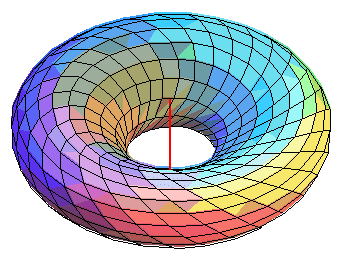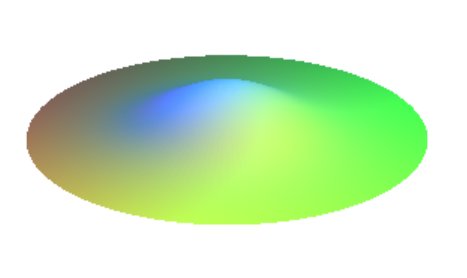General equation of the surfaces of revolution with axis directed by (a, b, c) :
General equation of the surfaces of revolution with axis Oz:
Cylindrical equation:
Spherical equation:
Partial differential equation:
Cartesian parametrization:
In particular, for a plane generatrix
In the latter case:
First fundamental quadratic form:
Surface element:
Second fundamental quadratic form:
Meridian curvature:
where N is the normal to the curve
Gaussian curvature:
The curvature lines are the meridians and the parallels (
The cylindrical equation of the asymptotic lines is:
The cylindrical equation of the geodesics is:
Guldin theorems:
The area of the surface of revolution generated by the rotation of an arc of a plane curve around an axis of its plane that does not cross the arc of the curve is equal to
The volume of the solid of revolution generated
by the rotation of a planar domain around an axis of its plane that does
not cross the domain is equal to
where S is the area of the domain and d the distance from
the center of gravity of the domain to the axis.

